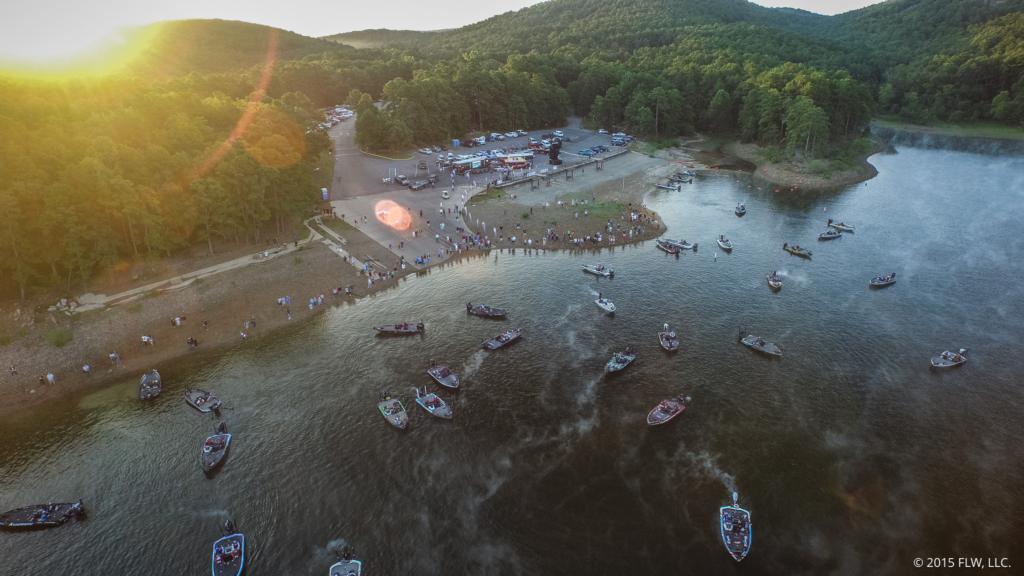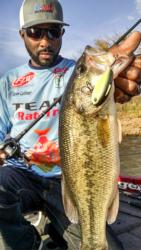Photoperiods and Fishing
Brian Latimer explains the effect light has on fish movement and position.

(Brian Latimer is a rookie on the Walmart FLW Tour. The writer's opinions and observations expressed here are his own, and do not necessarily reflect or represent the views, policies or positions of FLW.)
There are things I’ve learned about fishing through the years that carry some weight with me, and other things I’ve dropped along the way after concluding that they were too random and unpredictable to be useful. Then, too, some things seem to be true for only a season or two. One of the things that I’ve found to be the most consistently accurate over the years is how fish react to the photoperiod or amount of daylight. For whatever reasons, anglers don’t seem to understand or pay much attention to the photoperiod, but it’s an important factor that controls fish movements and positioning.
There are four specific phases that I feel have a profound effect on forage and fish behavior. The following are the technical terms for each phase:
• The Summer Solstice is the day of the longest light period, and shortest night, of the year.
• The Fall Equinox is that autumn day when the nighttime period and daylight period are equal in duration. Then the daylight period shortens.
• The Winter Solstice is the shortest day of the year. After it, the daylight period begins to lengthen incrementally.
• The Spring Equinox is the equivalent of the Fall Equinox, a mirror image that signals that the light period is gradually getting longer with each passing day.
Each photoperiod category triggers reactions in forage species and fish that involve migrations. For instance, the spawn occurs every year and, while being subject to local factors such as latitude, weather and water conditions, it’s fairly predictable and regulated by the light period.
My family business is landscaping. In a college horticultural class, I learned something that I had observed firsthand: For various reasons, higher temperatures prompt the annual growing cycle of some shrubs and trees, while the lengthening photoperiod is the main stimulus for other plants.
Likewise, through the years I’ve noticed that during certain times of year fish seem to make a move regardless of the weather or water conditions at the time. We tend to notice this more closely in the spring, but I’ve found it to be worth watching during the fall and winter as well. Not only do these naturally occurring events related to photoperiods affect bass, but also the forage that they feed on.
Every year there is a shad migration in the fall at the same time in September on my home lake (Hartwell), regardless of any other weather condition. There are years when the migration seems to be more noticeable and involve more fish, but it always occurs within a week or two every year.
This past year we had an exceptionally warm fall and winter that set records. We also had historic rainfall in my hometown that caused our lakes and rivers to rise extremely high. I thought that surely it would skew my traditional September deep-water bite, but, to my surprise, the bait and bass made their usual stops on some of the usual wintering structure. The bait selection and location changed a bit due to the conditions, but the type of structure was consistent.
The Winter Solstice has come and gone. For most of us, everything a bass does now and for the next several weeks revolves around the spawn. As the length of the days increases, the fish will begin to move shoreward in stages regardless of weather patterns and water levels. They might not actually spawn, but they definitely will start to get into position to do the deal. How far along they are in that process depends on what part of the country they’re in.
The photoperiod and how fish relate to it is a big puzzle, but anglers would benefit from trying to solve it. I’d encourage every fisherman to study the spring photoperiod and how the forage and bass on their home lakes are affected by it.
For that matter, study it all year. Remember, the only watch that Mother Nature has is the photoperiod, and everything runs by her time.
